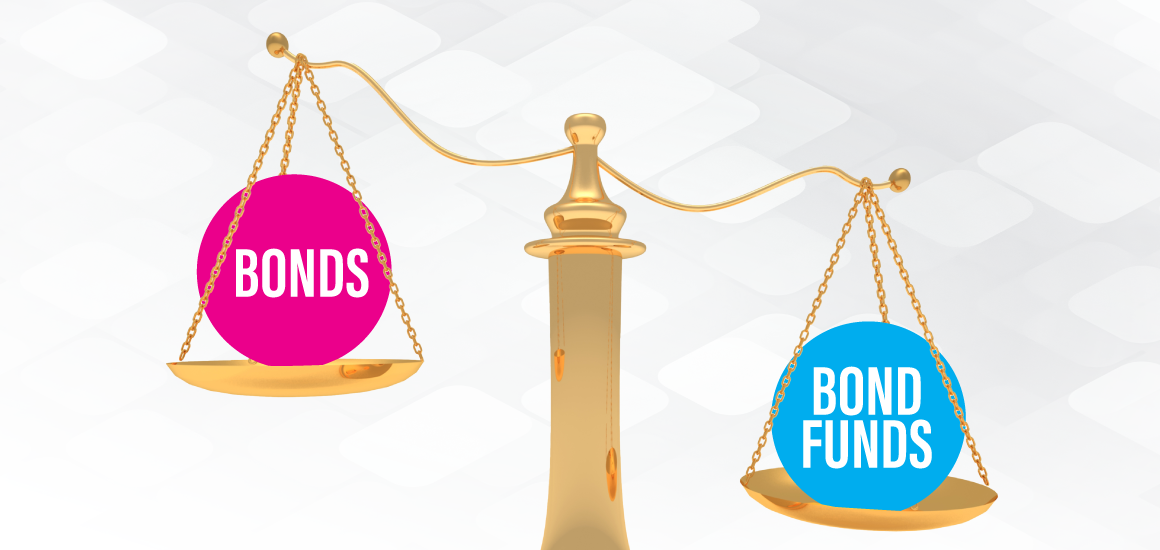In the vast and ever-evolving landscape of finance, investors constantly seek avenues that strike a delicate balance between stability and growth. Among the plethora of investment options, bonds and bond funds emerge as prime contenders, offering attractive prospects for those aiming to build a diverse and resilient portfolio.
While both bonds and bond funds revolve around debt instruments, their nuances significantly impact risk exposure, potential returns, and overall investment strategy. As such, a comprehensive understanding of the differences between these two financial vehicles becomes indispensable for investors seeking to optimize their gains while mitigating risk.
What are Bonds and Bond Funds?
Bonds are debt securities issued by governments, corporations, or municipalities to raise capital. When you invest in a bond, you essentially lend money to the issuer in exchange for periodic interest payments (coupon) and the return of the principal amount at the bond’s maturity.
Bond funds, on the other hand, are collective investment vehicles that pool money from multiple investors to invest in a diversified portfolio of bonds. They can take the form of mutual funds or exchange-traded funds (ETFs), managed by professional fund managers.
Stocks might be eye catchy, bonds are relaxing though
A glimpse of how each of the sectors behaves
Bonds
Example 1: Government Treasury Bond
Government Treasury bonds are considered one of the safe investment options. Let’s say you purchase a 10-year Treasury bond with a face value of Rs 1,00,000 and a fixed interest rate of 6%. Over the next decade, you will receive Rs 6000 annually as interest, and upon maturity, you will get back the Rs 1, 00,000 principal.
Pros:
Low risk: Backed by the government’s creditworthiness.
Predictable income: Fixed interest payments throughout the bond’s life.
Cons:
Limited diversification: Returns tied to a single issuer.
Interest rate risk: If market interest rates rise, the bond’s value may decline.
Example 2: Corporate Bond
Corporate bonds involve lending money to a corporation. Suppose you invest in a 5-year corporate bond with a face value of Rs 50,000 and an interest rate of 11%. The company will pay you Rs 5,500 annually as interest, and at maturity, you’ll receive the Rs 50,000 principal.
Pros:
Higher yields: Generally offer higher interest rates compared to government bonds.
Variety of issuers: Companies from different sectors issue corporate bonds.
Cons:
Default risk: Companies may face financial difficulties, leading to default.
Credit risk: The bond’s value can be affected by changes in the company’s credit rating.
Bond Funds
Example 1: Mutual Fund – High-Yield Bond Fund
High-yield bond funds, also known as junk bond funds, invest in lower-rated corporate bonds with higher yields. Imagine investing Rs 10,00,000 in a high-yield bond fund with an average yield of 9%. The fund holds various corporate bonds, offering diversification across multiple issuers and industries.
Pros:
Diversification: Exposure to a range of corporate bonds, reducing specific issuer risk.
Professional management: Experienced managers make investment decisions.
Cons:
Higher risk: Lower-rated bonds come with default risk.
Interest rate sensitivity: Bond fund values can fluctuate with changes in interest rates.
Example 2: ETF – Government Bond ETF
Government bond ETFs invest in a basket of government-issued bonds, providing exposure to the broader bond market. Suppose you buy shares of a government bond ETF with a focus on Indian Government bonds.
Pros:
Liquidity: ETFs trade on exchanges like stocks, offering easy buying and selling.
Low cost: Generally have lower expense ratios compared to mutual funds.
Cons:
Less control: ETF investors have no say in the individual bonds held by the fund.
Premium or discount: ETF prices can deviate from their net asset value.
How to leverage volatility?
The significant difference between Bonds and Bond Funds
Risk and return comparison
Bonds: Generally offer more predictable returns and lower risk, depending on the issuer’s creditworthiness.
Bond Funds: Tend to be more diversified, spreading risk across various bonds, but can be subject to market volatility.
Liquidity and accessibility
Bonds: Less liquid, as they require holding until maturity to realize the full principal value.
Bond Funds: Highly liquid, allowing investors to buy and sell shares at prevailing market prices.
Professional management and costs
Bonds: Self-managed investments, so no management fees are involved.
Bond Funds: Managed by professionals, which incur management fees and other expenses.
Assessing the needs
Conservative Investor
Investor A, a retiree seeking a stable income with minimal risk, opts for individual bonds. He invests in government bonds to ensure the safety of his capital and reliable interest payments. The predictable returns align with John’s risk tolerance, providing him with peace of mind during retirement.
Moderate Investor
Investor B, a middle-aged investor with moderate risk tolerance, decides to diversify her portfolio with both individual bonds and bond funds. She invests in a mix of high-rated corporate bonds for stability and a bond fund to access a broader range of bonds for potential growth.
Aggressive Investor
Investor C, a young investor with a long investment horizon and high-risk appetite, leans toward bond funds. He allocates a portion of his portfolio to high-yield bond funds, aiming for higher returns despite the associated risk. Additionally, he diversifies with government bond ETFs for added stability.
Wrapping up
Bonds offer stability and predictability, while bond funds provide diversification and professional management. Assessing personal financial goals, risk tolerance, and investment horizon will guide investors in choosing the most suitable option or a combination of both. By blending bonds and bond funds effectively, investors can build a balanced portfolio that withstands market fluctuations and aligns with their unique financial aspirations






